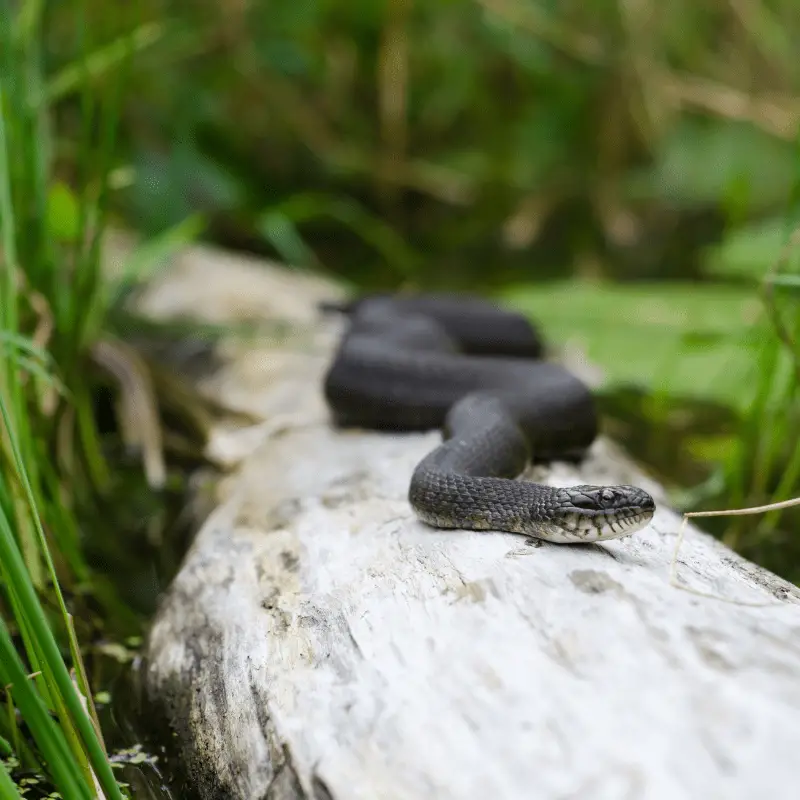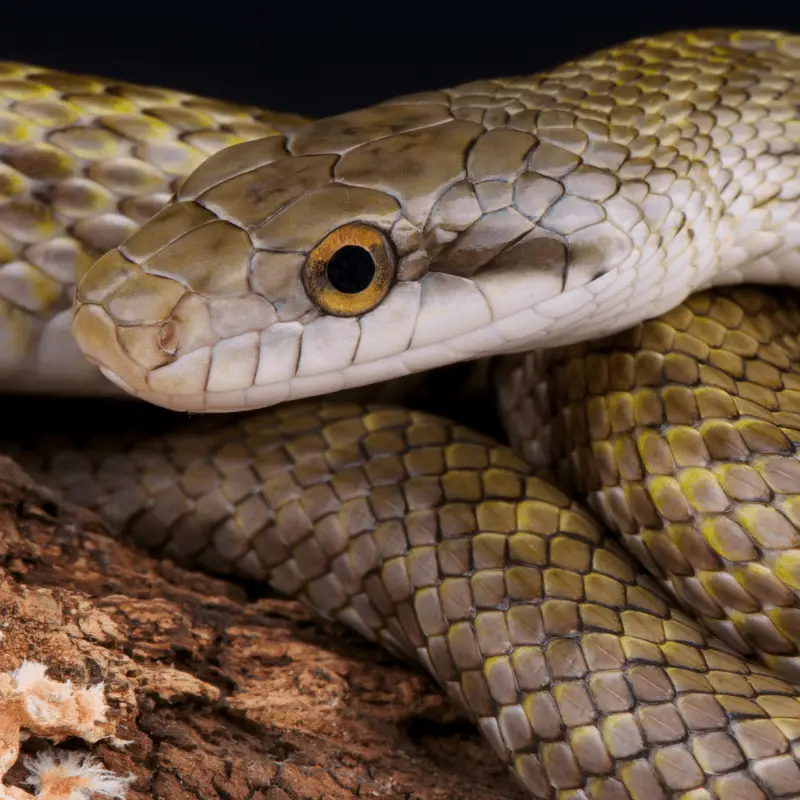When the temperature is perfect, you can find many snakes out in the open. During this time, the days are not too hot or too cold, but does this make the snake nocturnal?
No, not all snakes are nocturnal. Snakes that live in areas with high daytime temperatures are mostly considered diurnal. However, you can often find them more active once the sunsets. The activity of the snakes depends on two main factors; thermal temperature regulation and food. That is why most of the snakes are neither completely diurnal nor exclusively nocturnal.
Diurnal and Nocturnal Examples
We now know that snakes are neither diurnal nor exclusively nocturnal. That means they can be active both during the day and night. As their body temperature changes along with the environment’s temperature, these snakes only come out of their hiding places searching for prey, and this could be day or night, depending.
Diurnal
For example, even though some desert snakes are considered diurnal, you will hardly find one out during the day as it’s too hot. They only come out of their hiding places when the weather becomes milder and just right for them.
Nocturnal
During the springtime is when snakes complete their hibernation and come out from their hiding places. As the temperature increases, snakes also changed their activity pattern. During this time, they become nocturnal, the activity level of a snake increases during the night.
Face to Face With A Snake
In this case, do not go near the snake intentionally. Please give it a wide berth, and let it be. Do not provoke it in any way. Once it senses you, it will try to move away from you as fast as it can.
Do not pick the snake up even if you think that it is not poisonous. Make sure that you do not corner them in any way.
It doesn’t matter whether the snake is venomous or not; all snakes like to defend themselves if they are harassed or cornered. Even though people think that non-venomous snakes should not bite, it is not correct. Even though they do not have any Venom, the non-venomous snakes bite, and it can hurt.
Where can you encounter snakes?
As you may already know, snakes are cold-blooded animals. That means they like to come out from their hiding places when it is warm outside. You can find a snake sunbathing on cliffs, rocky areas, or rock walls on cold mornings. People often run into snakes when they sit on the edge of a cliff and dangle their legs down.
Snakes also like to stay near water holes, especially if the environment of the place is otherwise dry. So if you are hiking in an area near a stream, try to stay a bit more vigilant. People going on a hike in some parts of the world should keep looking ahead for a snake that might cross the path.

Stay away and let it slide out of the way whilst keeping well back. However, if there is a fallen log on the road, snakes can be basking in the sun on the other side. So, maybe try to go around the log instead of stepping over. If you go deep in the forest and try rock hopping, the odds of meeting a snake spikes up astronomically. Because, in nature, there are more crevasses and creeks, and chances of meeting people are Less, so if you are rock hopping off-trail, be aware of your surroundings.
Snake Bites
The treatment of all snakebites is primarily similar. Do not try the old method of cutting the bitten area and sucking the venom out of the body. The only thing you should do is to take the victim to the nearby Health Care Centre for evaluation.
The truth is, there is nothing much to do on the field. It would be best if you travelled to a hospital to get an anti-venom injection. But understand that even though the snake is venomous, generally, they do not put a lot of venom into your body. Most of the time, snakes bite humans because they try to protect themselves.
Bite Symptoms
The main symptoms of a snake bite are swelling and pain. Transport the victim to the nearby hospital. The less you move the victim, the better it is. Keeping the snake bite victim calm is one of the most critical factors. If you are on your own and the snake has bitten your leg, try to hop. If you get bitten on your wrist or your hand, hold it as still as possible, and get help.
Misconceptions About Snakes
Snakes do not travel in pairs. The only time you can see two snakes together is during the mating season. Otherwise, if two snakes stay together, the bigger one will attack the smaller snake and eat them.
Even though snakes do not possess any eardrums, they are not deaf. The snakes have inner ears which they can pick up the ground vibrations and low-frequency sounds. However, the snakes do face difficulty in deciphering sounds of the higher pitch.
All in all, snakes do not attack human beings on their own. Humans are faster, stronger, bigger, and can be considered one of the main predators of snakes. Only during the mating season, the behaviour of a snake can be a bit erratic. The female snakes can also be more aggressive if their eggs are nearby. However, most of the snake bites take place because the snakes find themselves cornered or significantly threatened.

